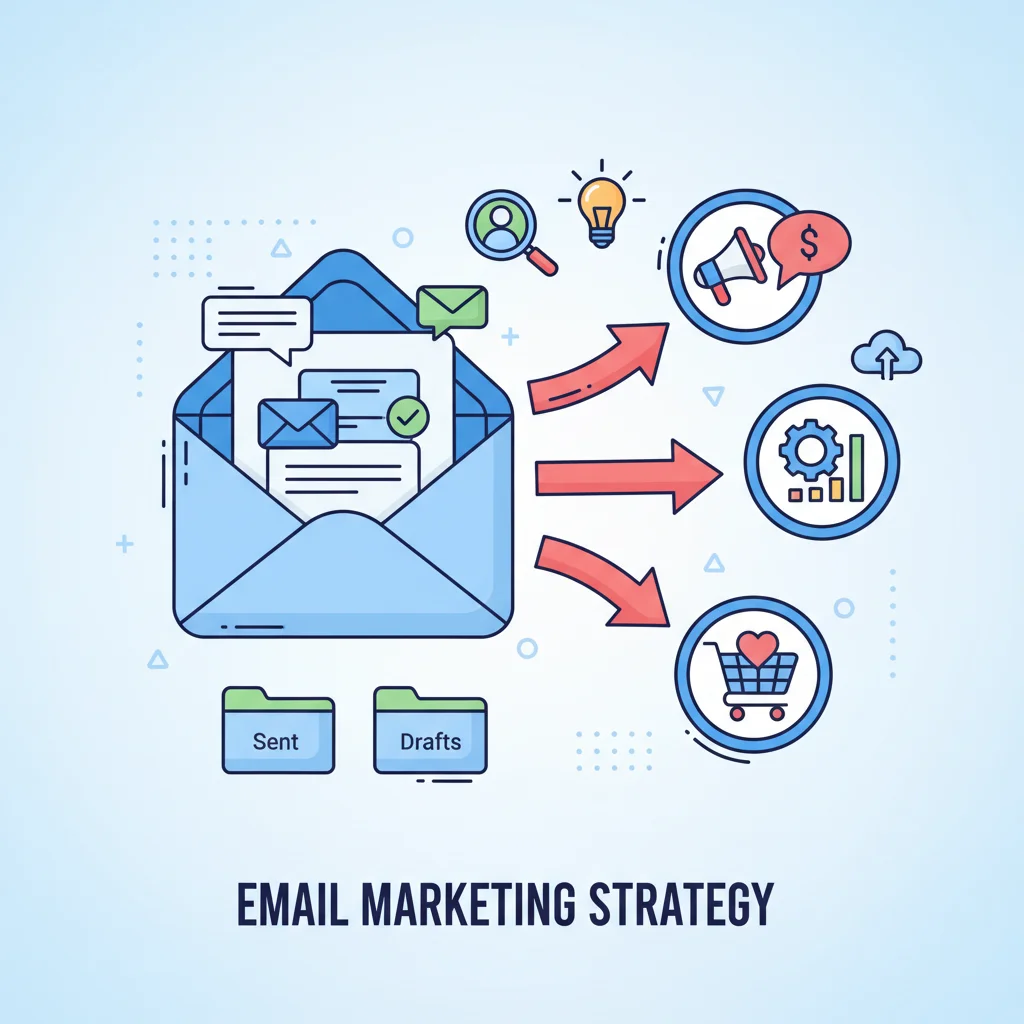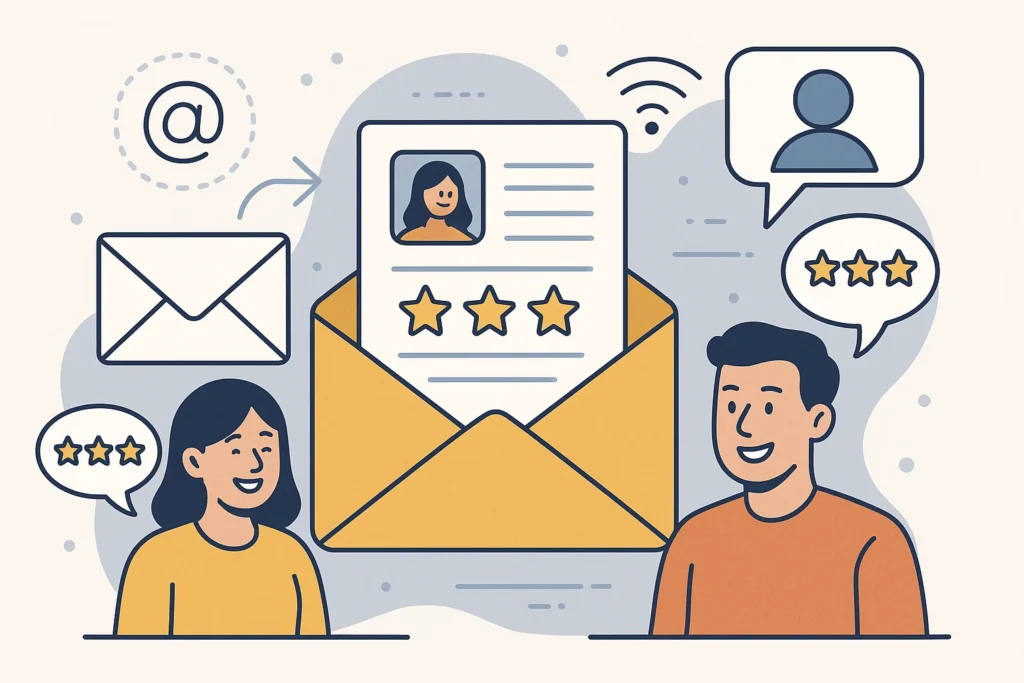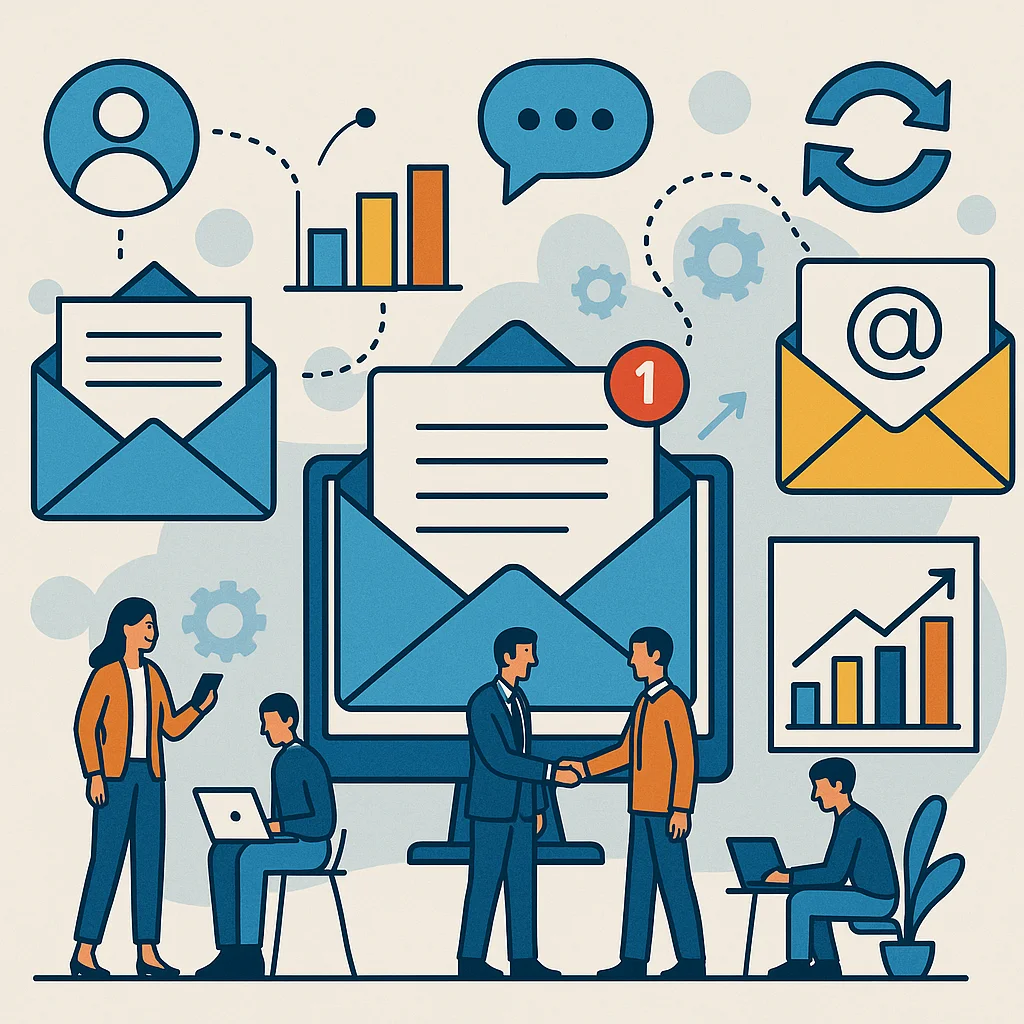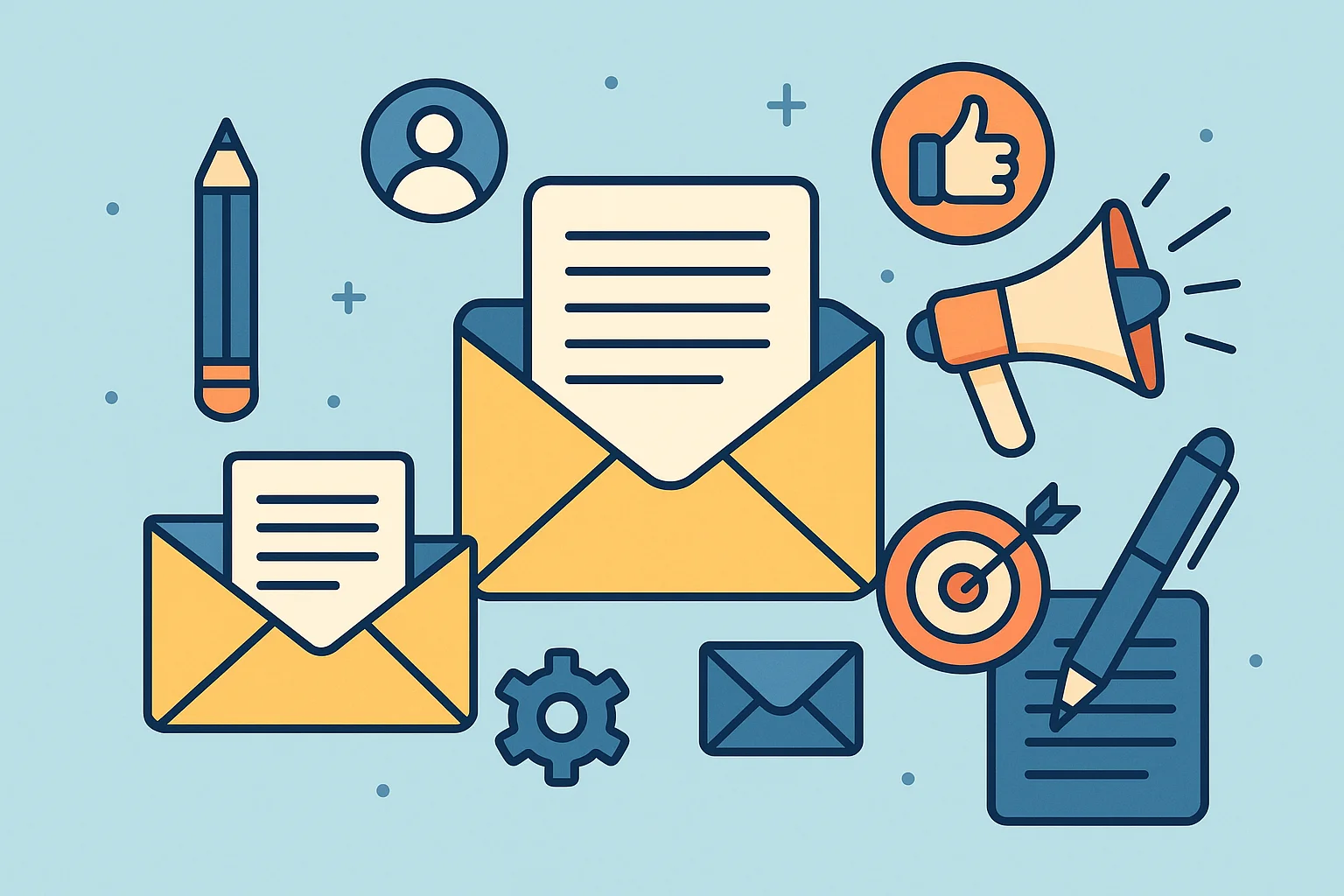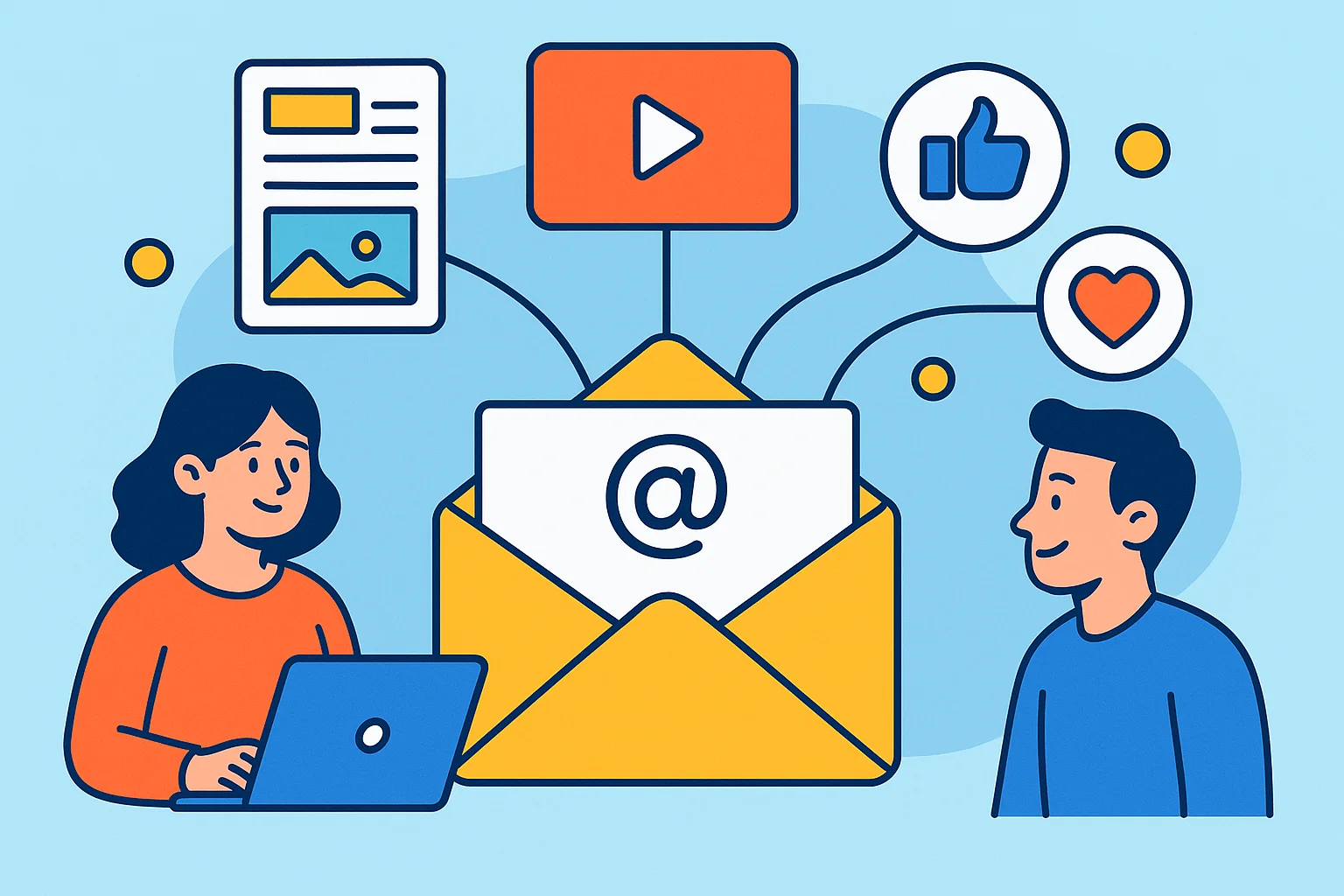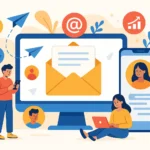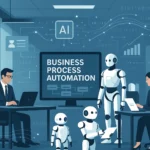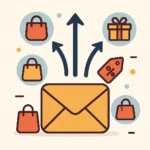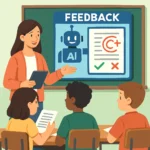Now Reading: 7 Effective SaaS Email Marketing Campaign Secrets That Convert
-
01
7 Effective SaaS Email Marketing Campaign Secrets That Convert
7 Effective SaaS Email Marketing Campaign Secrets That Convert
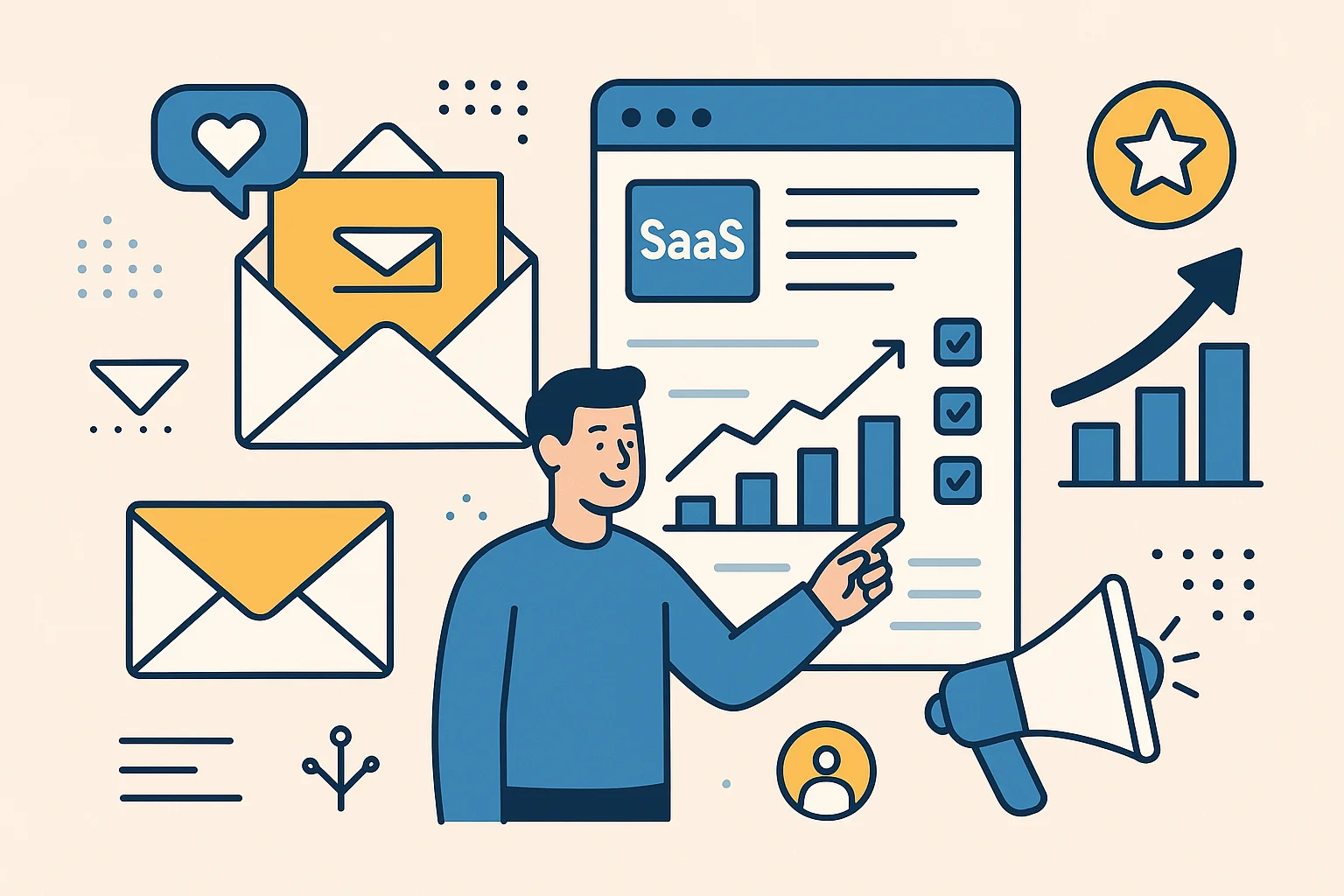
Everyone thinks SaaS email marketing is about blasting promotional messages until people buy. Wrong. The most successful SaaS companies use email like a personal concierge – guiding users, solving problems, and building relationships. An effective SaaS email marketing campaign isn’t about selling harder; it’s about helping smarter.
Key Takeaways
Creating an effective SaaS email marketing campaign requires strategic planning and execution across multiple touchpoints. Here’s what you need to know:
- Define clear goals – Whether it’s trial signups, conversions, or customer retention, your campaign objectives determine everything from messaging to metrics
- Segment your audience – Group users by behavior, lifecycle stage, and company data to deliver personalized experiences that actually resonate
- Master behavioral triggers – Set up automated emails based on user actions like abandoned signups, feature usage, and engagement patterns
- Craft compelling subject lines – Use curiosity, urgency, and personalization to boost open rates and cut through inbox noise
- Focus on value delivery – Every email should solve a problem, educate, or provide genuine value rather than just pushing for sales
- Leverage email templates – Use proven formats for welcome sequences, onboarding, feature announcements, and retention campaigns
- Implement dynamic content – Personalize emails based on user data, subscription level, and behavior to increase relevance and engagement
Building Your Foundation
Know Your Goals Before You Write a Single Email
Here’s what most SaaS companies get wrong – they start writing emails before they know what they’re trying to achieve. An effective SaaS email marketing campaign begins with crystal-clear objectives.
Your goals might include:
- Brand awareness for new market segments
- Trial signups from website visitors
- Conversions from free to paid plans
- Customer education on advanced features
- Customer retention and churn reduction
- Expansion revenue through upselling
Each goal requires different messaging, timing, and metrics. If you’re focused on trial signups, your emails should emphasize quick wins and immediate value. For retention campaigns, you’ll want to highlight long-term benefits and success stories.
Build a Solid Lead Generation Strategy
You can’t run an effective SaaS email marketing campaign without quality leads. The best SaaS companies use multiple channels to build their email lists:
Content marketing works incredibly well for SaaS. Create valuable resources like templates, guides, or tools that solve specific problems for your target audience. Gate this content behind email signups.
Webinars and demos are goldmines for qualified leads. People who attend live sessions are already interested in your solution.
Social media campaigns can drive significant email signups when you offer exclusive content or early access to features.
PPC campaigns targeted at high-intent keywords can capture leads who are actively searching for solutions.
The goal is gathering marketing-qualified leads (MQLs) who’ve expressed genuine interest in your brand. These leads can then be nurtured into sales-qualified leads (SQLs) through your email campaigns.
Useful Articles:
Segmentation and Personalization Strategies
Segment by Lifecycle Stage, Not Just Demographics
Most SaaS companies segment by job title or company size, but that’s missing the bigger picture. An effective SaaS email marketing campaign segments users based on where they are in their journey with your product.
Trial users need different messaging than paying customers. Someone who just signed up requires onboarding guidance, while a customer who’s been with you for six months might be ready for advanced features.
Company-level segmentation is crucial for B2B SaaS. Individual user activity doesn’t tell the whole story when you’re serving teams. Track metrics like:
- Company size and industry
- Number of active users per account
- Feature adoption across the organization
- Account health scores
Behavioral Trigger Campaigns That Actually Work
Behavioral triggers are the secret sauce of effective SaaS email marketing campaigns. These automated emails respond to specific user actions (or lack thereof) and feel incredibly personal.
Abandoned signup sequences target users who started registration but didn’t complete it. Here’s a simple template:
Subject: Quick question about your [Product Name] account
Hi [First Name],
I noticed you started setting up your account but didn't finish.
Was there something confusing about the signup process? I'd love to help you get started.
Just reply to this email and I'll personally walk you through it.
Best,
[Your Name]
[Your Title]
P.S. Your account is still waiting for you at [Direct Link]Feature adoption campaigns target users who haven’t tried key features. These emails should focus on specific benefits and include step-by-step guidance.
Inactive user re-engagement campaigns can win back users who’ve stopped logging in. The key is addressing why they might have stopped using your product.
Content Creation and Templates
Welcome Email Sequences That Set Expectations
Your welcome email is the first impression of your effective SaaS email marketing campaign. It should accomplish three things: thank the user, set expectations, and provide immediate value.
Here’s a welcome email template that works:
Subject: Welcome to [Product Name] - Let's get you started
Hi [First Name],
Welcome to [Product Name]! I'm excited you've joined [number] other [job titles] who are using our platform to [main benefit].
Here's what happens next:
1. Check out our quick start guide (5 minutes): [Link]
2. Join our private community: [Link]
3. Book a free onboarding call: [Link]
Your account is ready to go at [Login Link].
Questions? Just reply to this email - I read every single one.
Talk soon,
[Your Name]
[Your Title]
P.S. Keep an eye out for my email tomorrow - I'll share the #1 mistake new users make (and how to avoid it).Onboarding Email Series
An effective onboarding sequence guides users to their first “aha moment” with your product. This typically happens when they experience your core value proposition firsthand.
Day 1: Welcome and quick start guide
Day 3: Feature spotlight with tutorial
Day 7: Success story from similar customer
Day 14: Advanced tips and best practices
Day 21: Check-in and offer support
Each email should focus on one specific action you want the user to take. Don’t overwhelm them with multiple CTAs.
Product Update and Feature Announcement Emails
When you launch new features, your announcement emails should focus on benefits, not features. Users don’t care about technical specifications – they care about how this helps them solve problems.
Subject: The feature you've been asking for is here
Hi [First Name],
Good news - we just launched [Feature Name].
Why should you care? Because it solves that annoying problem where [specific pain point].
Now you can [specific benefit] in just [time/clicks].
Here's how it works: [Brief explanation]
Try it now: [Direct Link to Feature]
Questions? Hit reply and I'll help you get set up.
[Your Name]
P.S. This feature was built based on feedback from users like you. Keep the suggestions coming!Useful Articles:
Advanced Personalization Techniques
Dynamic Content Based on User Behavior
Dynamic content takes personalization to the next level. Instead of sending the same email to everyone, you’re showing different content blocks based on user data.
For example, free trial users might see upgrade prompts, while paid customers see feature tips. Enterprise customers could see different pricing information than small business users.
Usage-based personalization shows content relevant to how someone actually uses your product. If they’re a heavy user of Feature A but haven’t tried Feature B, your emails can focus on helping them discover Feature B.
Time zone optimization ensures your emails arrive at optimal times for each recipient. This simple change can boost open rates by 20% or more.
Company-Level Personalization for B2B SaaS
B2B SaaS companies need to think beyond individual users. Your effective SaaS email marketing campaign should account for company-wide adoption and decision-making processes.
Role-based messaging acknowledges that different people have different priorities. A CEO cares about ROI and strategic outcomes. A daily user cares about efficiency and ease of use.
Account health scoring helps you identify which companies are at risk of churning and which are ready for upselling. Your email messaging should reflect these insights.
Subject Line Optimization
Psychology-Driven Subject Lines
Your subject line determines whether your email gets opened or deleted. An effective SaaS email marketing campaign uses psychological triggers to boost open rates.
Curiosity-driven subject lines create information gaps that readers want to fill:
- “The mistake 90% of [job title] make”
- “Why [competitor] customers are switching”
- “The feature request that changed everything”
Urgency and scarcity work when used authentically:
- “Your trial expires tomorrow”
- “Last chance to join the beta”
- “Only 3 spots left in tomorrow’s training”
Personalization goes beyond just using someone’s name:
- “Sarah, your team’s usage report is ready”
- “How [Company Name] can save 10 hours per week”
- “Your custom integration is almost ready”
A/B Testing Your Subject Lines
Test different approaches to see what resonates with your audience. Try testing:
- Length: Short vs. long subject lines
- Tone: Professional vs. casual
- Approach: Benefit-focused vs. curiosity-driven
- Personalization: Name vs. company vs. role
Track not just open rates, but click-through rates and conversions. A subject line that gets opened but doesn’t drive action isn’t helping your business.
Useful Articles:
Automation and Workflow Setup
Lifecycle-Based Email Workflows
An effective SaaS email marketing campaign uses automation to deliver the right message at the right time. Set up workflows based on user lifecycle stages:
Prospect workflows nurture leads who haven’t signed up yet
Trial workflows guide new users to activation
Customer workflows drive feature adoption and prevent churn
Expansion workflows identify upselling opportunities
Each workflow should have clear entry and exit criteria. Someone shouldn’t receive trial emails after they’ve already converted to a paid plan.
Integration with Your Product Data
Your email platform should integrate with your product analytics to trigger emails based on actual user behavior. This might include:
- Login frequency
- Feature usage patterns
- Support ticket history
- Billing events
This integration allows you to send highly relevant emails that feel like natural extensions of the product experience.
Email Design and User Experience
Mobile-First Email Design
Over 60% of emails are opened on mobile devices, so your effective SaaS email marketing campaign must prioritize mobile experience.
Single-column layouts work best on small screens
Large, tappable buttons improve click-through rates
Scannable content with short paragraphs and bullet points
Fast-loading images that don’t slow down the email
Clear Call-to-Action Strategy
Each email should have one primary CTA that’s impossible to miss. Use action-oriented language that tells users exactly what will happen when they click:
- “Start your free trial” (not “Learn more”)
- “Schedule your demo” (not “Get in touch”)
- “Upgrade your account” (not “See pricing”)
Deliverability and Technical Considerations
Maintaining High Deliverability Rates
Even the most effective SaaS email marketing campaign fails if emails don’t reach inboxes. Focus on:
List hygiene by regularly removing inactive subscribers
Authentication with proper SPF, DKIM, and DMARC records
Engagement metrics by monitoring open and click rates
Spam compliance by following CAN-SPAM and GDPR requirements
Email Validation and List Management
Validate email addresses before adding them to your campaigns. Invalid emails hurt your sender reputation and reduce deliverability for all your emails.
Implement double opt-in for new subscribers to ensure email addresses are valid and users actually want to receive your emails.
Creating an effective SaaS email marketing campaign isn’t about sending more emails – it’s about sending better emails that actually help your users succeed. When you focus on value, personalization, and strategic automation, email becomes one of your most powerful growth channels.


